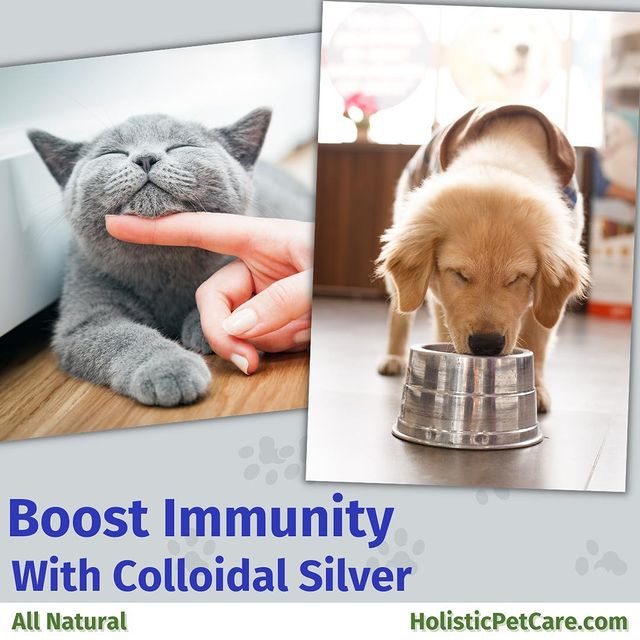Beginner Guidelines for Feeding a Raw Diet to Your Dog
Mar 16, 2022
As a beginner, there are two schools of thought on transitioning & feeding your dog a raw diet. However, as you read below, I hope you will consider switching “Cold Turkey” unless your dog has been on a processed diet for many years and/or has current health issues.
1) Switching cold turkey
2) Gradually introducing the raw food over time
In the majority of dogs, regardless of age or health status, the transition to a raw diet is best done immediately by fasting the dog for 24 hours before feeding the first raw meal.
By fasting the dog (no food, no treats, just water) for 24 hours, the digestive system is able to rest a little while and help boost the immune system. The dog will be more hungry and more interested in eating the next day on an empty stomach as well.
Most owners have come to find that throwing out the kibble one day and introducing raw food the next day causes no digestive issues whatsoever.
Happily, most dogs do very well switching to raw “cold turkey”. Note: do not ever fast a puppy under a year of age.
The other school of thought is to gradually introduce the raw food by feeding a raw meal one day and a kibble meal the next (only feeding once a day) for a few days until THEY feel better about it. Trust me though, the majority of dogs feel better about eating only raw right away!
WARNING: While some dogs have extremely sensitive digestive tracts due to a long life of being fed kibble and over-exposure to toxic chemicals, changing from any food to another type of food may very well cause at least some minor GI upset. However, the majority of dogs have no problems being switched to a raw diet all at once. If your dog is older or has current health issues,
It is important to note here however, that you NEVER want to add raw meat to a kibble or a cooked food meal. The dog, in fact, digests raw meat and bones very quickly; in many cases within only a few hours. On the other hand, processed kibble or cooked foods (which are not natural to the dog’s digestive system) have to remain in the digestive tract to ferment and break down enough that the body can attempt to obtain some nutrition from it. This process of taxed digestion can take 12 to 24 hours for processed or cooked foods to digest. If you mix the two at the same meal you are just asking for digestive issues.
So honestly, it is not really a good thing to transition slowly/gradually and in the long run, makes no sense at all if your dog is in good health.
Fasting your dog for 24 hours before introducing the first raw meal has proved to make the transition far easier on the dog’s digestive system.
Balanced Nutrition
One common concern with raw feeding for a lot of “beginners” is that they think it is not “complete and balanced” like the pet food industry says their processed food is.
The thing is, that in nature, balance occurs over time: every meal does not need to be completely balanced as long as the nutritional needs of the dog are met over the long run. You don’t have to calculate the exact percentages of protein, vitamins and minerals in each of your own meals, and you surely don’t have to do it with your dog’s meals either.
If you will feed a variety of animals and in a form as close to whole prey as possible, (Prey Model or Franken Prey) then it will be balancing out your dog’s nutrition over time just as nature intended.
Remember, dogs are carnivores and have been bred down from the wolf. Their digestive systems and their bodies are not as fragile as we have been led to believe. Feed raw meat, bones, and organs from a variety of animals and the diet will balance itself over time.
I personally recommend when you first feed raw meat, bones and organs to your dog that you stick to just one protein source (such as just poultry) for at least four – six weeks as this will help ensure that your dog has fully transitioned and cleansed or “detoxed” their digestive system. You see, by only feeding one protein source for a month or two, it simplifies things greatly for the digestive system.
Feeding only one large meal (all you would normally give in two meals) once a day is also recommended for dogs a year old and older. This is great for digestive health.
Then, in a 4 – 6 weeks begin to add a variety of different protein sources – slowly/gradually, we can ensure that a dog is doing well with the addition of each new food item. Most begin the switch by feeding poultry. Pasture raised (antibiotic and hormone free) is always best if at all possible. Poultry is low in fat and usually very easy to digest as well having softer, more pliable bones . If you can not find or afford organic then it is important for you to find a brand that does not contain salt/sodium or other enhancements.
Feeding Raw Bones and Bacteria Risks
There is an ongoing debate about the “potential” dangers of feeding raw bones to dogs, and also of the potential risks of food poisoning and salmonella infection. Please understand that most of what you have read about these topics, is erroneous information. This is where a knowledge of the nature of the gastric environment of the carnivore comes in and this is directly related to diet.
The gastric acidity (gastric PH) of the stomach of a dog (or cat or any carnivore) eating a diet predominantly made up of raw meat is naturally very low (very acidic) and a PH of 2 or lower (relative to the level of meat protein). This highly acidic environment is what is conducive to the breakdown of raw meats, and raw bones, into soft digestible material. The low PH also happens to be highly effective at killing bacteria, particularly potentially pathogenic bacteria like salmonella, clostridia, campylobacter and E Coli. So, the natural “wild” diet of dogs and cats is designed as a gastric environment that is suitable for the breakdown of raw meats, organs and bones.
Processed, commercial pet foods, in an effort to keep their costs minimal in manufacturing the food, significantly increase the carbohydrate components of the food, using corn, wheat, rice, potato and other forms of carbohydrate are often the first and most major ingredient. Secondly, processed pet foods have also begun to substitute meat (animal) proteins with plant based proteins that are of course, much cheaper than meat as having the dog’s carnivore digestive system unable to properly digest them, thus taxing the major organs of the body.
When our carnivore companions eat diets with high carbohydrate, high plant protein and lower meat protein, it has been found that the acidity level of the stomach begins to decrease (gastric acidity relates to meat protein), and the stomach becomes progressively more alkaline (PH 4 and above). In this less acidic environment, several key issues arise;
- With the altered PH, gastric digestion and emptying slows down
- food bacteria and contaminants are not destroyed as effectively
- raw bones and bone material is not softened and broken down effectively (digestive enzymes loose function) and this can result in rare cases cause an obstruction.
These problems usually become apparent when a dog that has been regularly fed a commercial processed pet food diet, and is then offered a raw bone, or a meal of raw meat. Because the stomach acidity is directly dictated by the meat protein content of the diet, these dogs already have a less acidic stomach, which is not able to soften and breakdown raw bone material, nor is the stomach PH able to cope with a load of bacteria. The result can be a sudden “rejection of the bone and/or meat, in the form of vomiting, or a bout of acute gastroenteritis, from an overgrowth of bacteria, OR it may in some cases result in a bone obstruction in the stomach.
With the delayed gastric emptying effect, any bacteria that do survive are now, also able to grow up into much larger numbers, and this effect is continued in the large bowel, with further fermentation of the plant fiber in the pet food, and a delay in overall gut transit time (up to 24 hours.). This can also result in constipation from excessive water re-absorption, or in very loose stools from the over production of short chain fatty acids in the colon.
This is why it is a good idea to only feed soft, easily digested raw bones (poultry or rabbit) or only ground bones for the first week to ten days. In dogs that have been on kibble or canned, processed foods most of their lives, it often will take from 7-10 days on a totally raw meat based diet for the gastric acidity levels to drop down to the natural (preferred) PH 2 level.
A common complaint often heard from people switching their dogs to raw is that their dog “can’t eat, digest or “tolerate” a raw diet because he/she always vomits it back up. This most often happens with those who are trying to feed both processed food (kibble, canned) and fresh meat and bones together or that are switching an older dog that has been on processed pet food all of its life.
There are two reasons for this happening. One is that they may mistaking regurgitation with vomiting and the other being that the dog’s PH has not become low enough to handle the digestion of bones just yet.
Often when a dog is learning to eat raw meaty bones (let’s say a Chicken leg quarter) they don’t take their time to crush the bone to flatten it a bit to make it easier to swallow. They will then regurgitate it right back up within in seconds with quite a bit of slimy, mucusy saliva to make swallowing it easier for them.
I always recommend holding the meaty bone and playing a game of tug if need be to teach the dog to pull chunks of meat off the bone and then to bite down hard to crush and flatten the bone better before swallowing it. Remember, dogs, being carnivores, don’t and can’t chew, they are natural gulpers. Most learn very quickly on their own to crush and flatten the bones more before swallowing them.
Vomiting usually occurs some time after finishing a meal and usually the food will be partially digested and it will contain stomach acid, which will smell pretty foul. If your dog is actually vomiting its raw meals, then they may be better off introduced a little more gradually, so that the gastric acidity is allowed to normalize.
When you do introduce bone for the first time, it is always best to feed it with the meat intact on the bone to make sure your dog’s gastric PH does remain low (acidic).
Don’ t worry so much about ratios of vitamins, minerals, percentages and weights starting out and transitioning but as you are able to feed more variety of animal protein sources, be sure to feed as close to the entire animal as possible, i.e. raw muscle meat, bones and the organs all together in the same meal, in as whole an animal form as possible. For example, for a larger dog, give them an entire chicken or rabbit carcass; smaller dogs can have a chicken thigh, a chicken heart a gizzard and a little pinch of liver. Feed a variety of animals and balanced nutrition will work its self out. Just for your own information, the average prey animal has about 10% to 15% bone, about 10% organs, and the rest muscle and fat and connective tissue. So, if you feed 5% bone or 25% bone, it won’t matter. 5% organs or 20% organs doesn’t make any difference. Just stay somewhat in the ballpark and you will be fine.
A good indicator that you have the right balance and ratio of meat, organs and bones is to keep an eye on your dog’s stool/poop. Ideally, the poop should be fairly dry, small and solid. If the poop is runny, it generally means you need to feed more bone. If it is too hard/dry, white and powdery when it comes out, feed a little less bone.
* As an animal naturopath, I recommend feeding fresh, whole, raw meaty bones over a prepared, frozen ground raw meat based diet. However, some pet owners still have a fear of their dog’s choking or not eating the whole pieces of animal (chicken leg quarter, etc.) and will often start out with a ground diet for their own fear’s sake. This is fine for a while or for older dogs that are missing a lot of their teeth and would not be able to crush the bones to eat them in the first place, however, please be aware that there are a number of reasons to completely avoid ground foods in your dog’s diet. But one of the most important reasons for this has to do with the dog’s teeth.
Besides the issue of oral/dental health with regards to whole vs. ground foods, it is also a matter of digestion. Feeding ground food encourages speedy gulping, because virtually no effort, and so very little time, is needed to consume it.
Quickly inhaling ground food causes it to arrive so rapidly into the dog’s stomach, that often there’s little to no time for necessary digestive acids to be fully excreted. Such meals may end up causing irritation or indigestion, which can mean a greater chance of them either being vomited up, or coming out the other end in a less than desirable form.
On the other hand, one of the great benefits of feeding whole raw food is that it requires some work on the part of the jaws and teeth to hack away at fleshy fibers and bones, and this takes some time. The time it takes to gnaw away at whole meaty bones to the point where swallow-able sized hunks have been torn off, gives the gut time to activate its gastric juices so that when the food finally does hit the stomach, it has a much better chance of being properly digested.
How Much Do I Feed?
As a general guideline we suggest that you feed your adult animal, 2% of his “ideal” body weight daily until you can see if the dog is gaining, losing or maintaining its weight. This amount can be fed once a day (the preferred and most healthy way) or divided in half and fed twice a day. Keep in mind that your individual pet’s needs will depend on things like his age, activity level, health, metabolism, and breed.
Growing Puppies require 4-6% of their body weight daily and overweight Pets require only 1- 1 1/2% of their body weight daily until they have reached their optimal weight.
If your dog is elderly or already in a dis-eased state it is recommended that you transition your dog under the guidance and support of a knowledgeable animal naturopath. They will be able to help you to help your senior friend to detox and rebuild his immune system as you begin him on the raw diet.
It can be normal for some transitioning animals to experience diarrhea and or a small amount of vomiting of undigested food. This is because as mentioned above; it can take a little while for the PH to balance out and I takes time for the good bacteria to build back up in an animals digestive tract – especially if he has always been on commercial, processed food.
Dogs recovering from junk pet food malnourishment and chemical toxicity will often experience a healing crisis or detox during the transition to a more healthful diet.
What About Supplements?
There are really only three supplements a healthy dog may need while being switched or transitioned to a raw diet:
If you are not feeding pasture raised animals or their parts, you may also want to occasionally supplement wild caught Salmon oil.
While these three essential nutrients can be found naturally occurring and bioavailable in raw food and especially raw, green tripe, if the animal parts you are feeding to your dog, are not from pasture raised animals, without hormones, antibiotics and GMOs then these will not be as readily available to the dog and you will want to supplement their diet with these for at least a year when switching an adult dog to raw – most especially if they had been on antibiotics or exposed to toxic chemicals.
*If your dog is going through a health challenge or in poor health, you may want to have a consultation for more information regarding appropriate supplements and/or natural healing modalities as well as the possible need to detox your dog.
The key points to remember when feeding a raw diet are:
- Remember that dogs are carnivores and any grains or regular daily added vegetables should be avoided. Or if you feel you must give veggies give as a treat or ferment for best digestibility
- Balance is achieved over time.
- The calcium and phosphorus ratio should be 1:1. Meats are high in phosphorus, and bones are high in calcium. Whole prey, fish, eggs and tripe have a balanced ratio as well.
- Whole pastured poultry eggs (fed with the shell, whites and yolk) contain a full array of nutrients including Omega 3s.
- Try to find grass fed/pasture raised animals that have not been given hormones or medications if possible.
- Younger food animals in general will have accumulated fewer toxins to pass on to your dog.
- Don’t be afraid to feed things you may personally think are ˜weird and icky” such as chicken feet, beef trachea, tails, lung, kidney, testicles, deer trim, etc.
- Chicken, duck and turkey necks along with feet are loaded in natural chondroitin and glucosamine, which help to build healthy joints.
- If feeding pork or salmon, it is always better to be safe than sorry so you can freeze the meat for two weeks before feeding to reduce the small risk of parasites.
- Glands if you can get them are vital for good health, look for glandulars from (again) pasture raised, healthy animals.
- NEVER feed cooked bones of any type. Raw bones are soft enough to bend and digest easily. For optimal safety, meal times should always be supervised.
- Don’t freak out about feeding exact percentages of meat, bone and organs. Just keep in mind you are attempting to feed as close to what is found in nature.
- Consider only feeding one large meal a day – this is much healthier for the digestive tract.
- Don’t feed a lot of supplements. As a general rule, feeding a prey model diet consists of all the naturally sourced vitamins, minerals, enzymes and probiotics needed.
Isn’t Feeding Raw Expensive?
If you are buying cuts of meat or pre-ground raw “diets”, rather than hunting or buying whole animal parts, the Species Specific diet is quite a bit more costly than feeding kibble or canned. You will likely notice a cost difference in your food bill. However, there are some important things you want to keep in mind. Raw feeding isn’t some new trend—again, it dates back as long as dogs have been around. Dogs on a raw species specific diet also live longer statistically. Dog owners who have had their dogs on the raw diet report that their dogs live healthier and longer lives, have fewer to no short and long-term illnesses, have more energy, and develop fewer problems with ligaments and their bones. So while the initially outlay is a bit more costly, what you save in veterinary bills in the long run makes it worth it!
This above article is from my Mentor and Teacher Dr. Jeannette Thomason, who passed away recently. I am sharing some of her posts on this site to keep the information in circulation
https://thewholedog.com/beginner-raw-feeding-guidelines-transitioning-your-dog-raw-diet/








